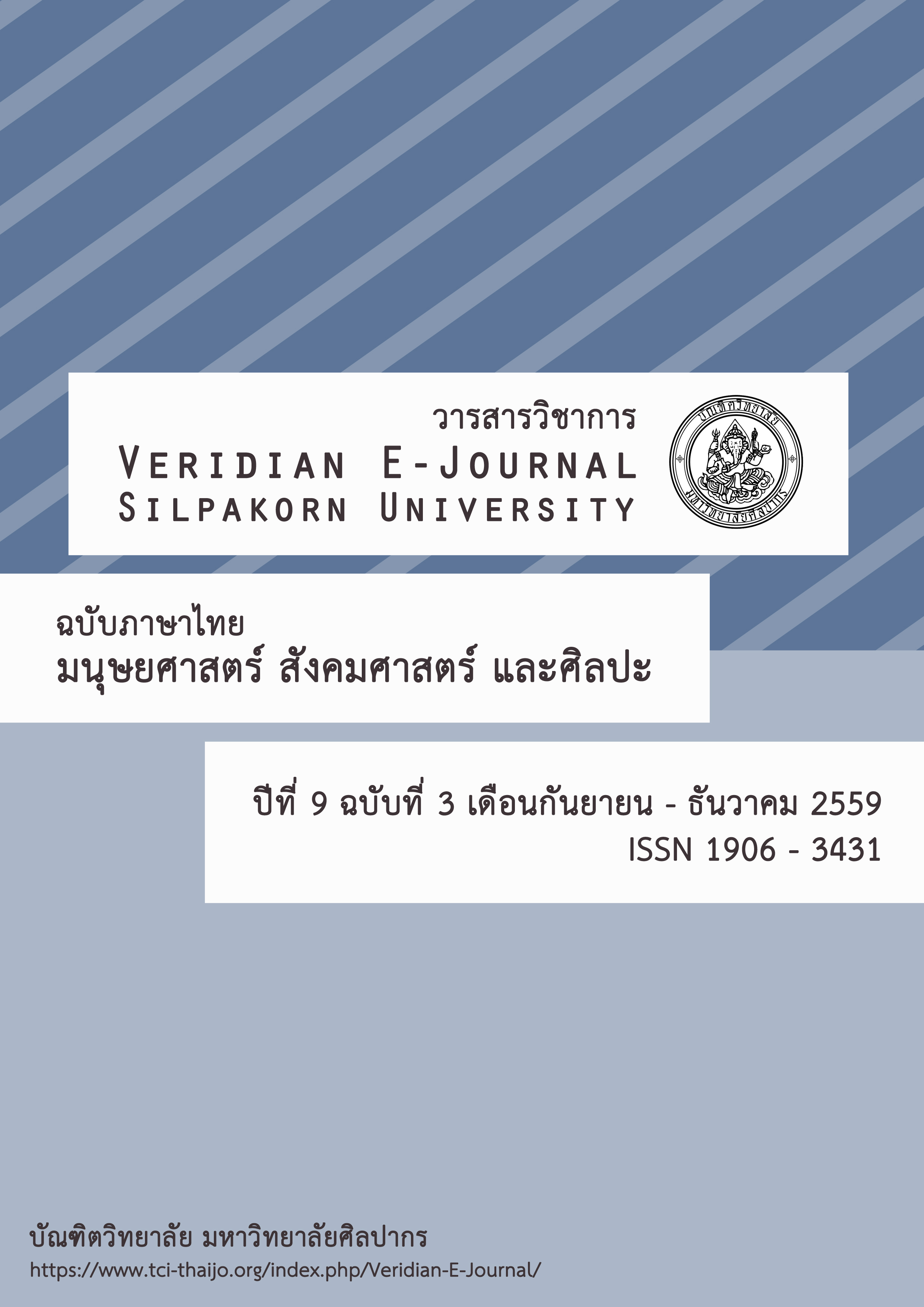การประเมินหลักสูตรศึกษาศาสตรบัณฑิต สาขาวิชาภาษาไทย คณะศึกษาศาสตร์ มหาวิทยาลัยศิลปากร
Main Article Content
บทคัดย่อ
การวิจัยประเมินหลักสูตรศึกษาศาสตรบัณฑิต สาขาวิชาภาษาไทย คณะศึกษาศาสตร์ มหาวิทยาลัยศิลปากร ครั้งนี้ มีวัตถุประสงค์เพื่อประเมินหลักสูตรศึกษาศาสตรบัณฑิต สาขาวิชาการสอนภาษาไทย การวิจัยนี้เป็นการวิจัยประเมินผลโดยใช้รูปแบบซิป (CIPP Model) ของแดเนียล แอล สตัฟเฟิลบีม กลุ่มตัวอย่าง คือ ผู้บริหารคณะศึกษาศาสตร์ ผู้ทรงคุณวุฒิ คณาจารย์ นักศึกษาฝึกประสบการณ์วิชาชีพครู นักศึกษาปัจจุบัน ครูพี่เลี้ยงหรือผู้ใช้นักศึกษาฝึกประสบการณ์วิชาชีพครู และเอกสารที่เกี่ยวข้อง เครื่องมือที่ใช้เก็บรวบรวมข้อมูล คือ แบบสัมภาษณ์ และแบบสอบถาม การวิเคราะห์ข้อมูลใช้สถิติค่าเฉลี่ย () ส่วนเบี่ยงเบนมาตรฐาน (S.D.) และการวิเคราะห์เนื้อหา ผลการวิจัยแยกตามองค์ประกอบการประเมินเป็น 4 ด้าน ดังนี้
1. ด้านสภาวะแวดล้อม (Context) พบว่าวัตถุประสงค์และโครงสร้างของหลักสูตรมีความเหมาะสม แผนการดำเนินงานของสาขาวิชาเหมาะสมทั้งด้านการพัฒนาคณาจารย์และพัฒนาสาขาวิชา สาขาวิชามีจุดแข็งด้านหลักสูตรของสาขาวิชาภาษาไทย คณาจารย์ บุคลากรสนับสนุน การให้ความร่วมมือกับหน่วยงานทั้งภายในและภายนอกมหาวิทยาลัย ความรู้ความสามารถของนักศึกษาก่อนเข้าศึกษาในสาขาวิชาภาษาไทย สภาพแวดล้อมทางกายภาพ ความมีชื่อเสียงของสาขาวิชา และการเป็นที่ยอมรับของสังคม
2. ด้านปัจจัยนำเข้า (Input) พบว่ามีความเหมาะสมในระดับมากถึงมากที่สุด ในด้านเนื้อหาของหลักสูตร คุณสมบัติของผู้เรียน/การสอบคัดเลือก และคุณสมบัติอาจารย์ที่สอน/อาจารย์ที่ปรึกษา สภาพแวดล้อมทางกายภาพ วัสดุอุปกรณ์ และสิ่งอำนวยความสะดวกต่าง ๆ และงบประมาณในการผลิตบัณฑิต
3. ด้านกระบวนการ (Process) พบว่ามีความเหมาะสมในระดับมากถึงมากที่สุดทั้งทางด้านพฤติกรรมการจัดการเรียนการสอนของผู้สอน พฤติกรรมการเรียนรู้ของผู้เรียน การฝึกประสบการณ์วิชาชีพครู การจัดการเรียนการสอน และการให้บริการและการสนับสนุน
4. ด้านผลผลิต (Product) พบว่ามีความเหมาะสมในระดับมากที่สุด ทั้งคุณลักษณะของนักศึกษาปัจจุบันและนักศึกษาฝึกประสบการณ์วิชาชีพครู
The objectives of the study, An Evaluation of Bachelor of Education Program in Thai Language, Faculty of Education, Silpakorn University, was to evaluate the Bachelor of Education Program in Thai Language; and . This program evaluation was based on the CIPP Model of Daniel L. Stufflebeam’s. The sample comprised of administrators of faculty of Education, experts, lecturers, teacher students, current students, and school supervisors. Relevant documents were also collected. The research instruments were interview forms and survey questionnaires. The mean, standard deviation of items, and content analysis were used to analyze the data. The research revealed mainly separated into 4 parts were as follows:
1. Context: Both of objectives and structure of curriculum were appropriate. The operation planning of the Thai section was appropriate in both professional development and organization development. Thai major had strengths in curriculum, lecturers, personnel for support, cooperation both of departments inside and outside the university, pre requisite of students, environment, popularity of major and be accepted by society.
2. Input: According to the rating scale on the survey questionnaires, the items which were scored at the high to highest levels were content of curriculum, students’ qualification, entrance exam, lecturers’ quality and advisors’ quality.
3. Process: According to the rating scale on the survey questionnaires, the items which were scored at the high to highest levels were the performance of the lecturers, the performance of the students, Practice teaching, learning management and factors for support learning.
4. Product: both of items on the survey questionnaires about current students and teacher students were scored at the highest levels.

